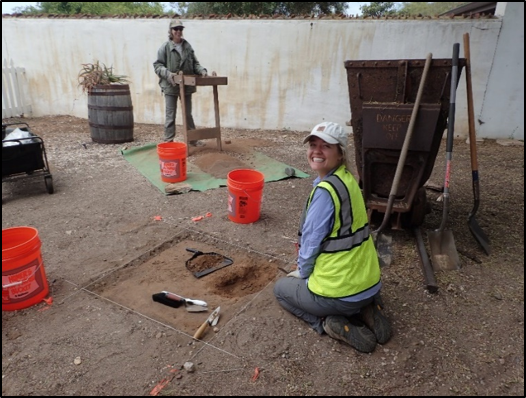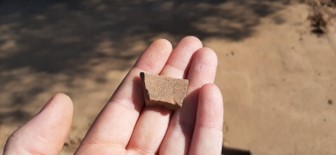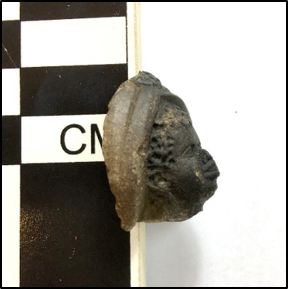Archaeological Testing and Excavation
The archaeologists at California State Parks’ Southern Service Center use archaeological testing to help determine presence or absence of subsurface artifacts or cultural deposits; to determine extent, content, and condition of archaeological deposits; and to help evaluate archaeological sites. Archaeological data recovery excavations are used when cultural sites are threatened with damage or destruction as a way to document and record site data before it is lost.
Archaeological Testing at Old Town San Diego State Historic Park
California State Parks’ Southern Service Center (SSC) Archaeologists performed archaeological testing and controlled excavation during accessibility improvement construction in Old Town San Diego SHP. Old Town San Diego has a long and varied history. It is situated in traditional Kumeyaay territory as well as home to some of the oldest and most historic structures in San Diego. The earliest European-built structures were constructed beginning in the 1820s just before San Diego officially became a town (pueblo) and has been continually occupied since that time. This resulted in an extremely varied and interesting cultural history as observed in the archaeological record.

During the most recent phase of accessibility improvements (2019-2020) SSC Archaeologists excavated several shovel test pits (STPs) and a 3x3-foot excavation unit at Casa de Pedrorena. The artifacts recovered from those excavations represent a variety of eras including 19th century tableware and glassware, early kiln fired roof tile and brick, early to mid-20th century ceramic, glass bottle and jar fragments, and a variety of construction debris from the various eras of construction in the area. The Native American presence was also represented as many sherds of brownware pottery, stone tool making debris, and a large ovoid metate were unearthed.
In late 2019, during construction for a walkway in Casa de Estudillo, SSC archaeologists halted construction as large numbers of cow bones began to surface. Because of the surprising amount of archaeological material being uncovered, a controlled excavation was carried out. This area yielded over 4,500 artifacts during a two-month period. Surface and monitoring collections added 500 artifacts to the total and many more were left onsite to be reburied.
In addition to the large number of cow bones there were also a large number of 19th century ceramic fragments including transferware with traditional motifs, porcelain, and other decaled and hand-painted tableware. Glass fragments in an array of colors such as aqua, cobalt blue, yellow, purple and red as well as intact and fragmented bottles were present on site. Abalone, clam and mussel shell, likely representing a food source were also discovered. Roof and floor tiles from various stages of renovation were buried in the courtyard and around the fountain.
Diagnostic glass artifacts ranged in date from 1860-1940s. These vessels once contained ink, patent medicine, and condiments. Objects from the ordinary lives of the former inhabitants of Casa de Estudillo such as a bone crochet hook, shell buttons, a suspender clasp, tea set fragments. Dozens of brownware pottery sherds as well as Mexican-era slipped earthenware speak of a time when traditional knowledge was blended with that of European newcomers.
Between 1910-1930, Casa de Estudillo was operated as a curio shop that sold gifts with a mission era theme, featuring arts and crafts for sale. The assemblage provided clues to this as it is mixed with fragments of art pottery. These include a vessel fragment featuring goat legs on a human form, southwest-style painted terra cotta, and a figurine face (broken off from a vessel) with tight curls and a turban.
The analysis of this collection is still ongoing. As the cataloging is completed and a report is written for this collection, we hope to learn more and add to the cultural history of Old Town San Diego.
 from Casa de Estudillo excavation.jpg)


 from Casa de Estudillo excavation.png)
